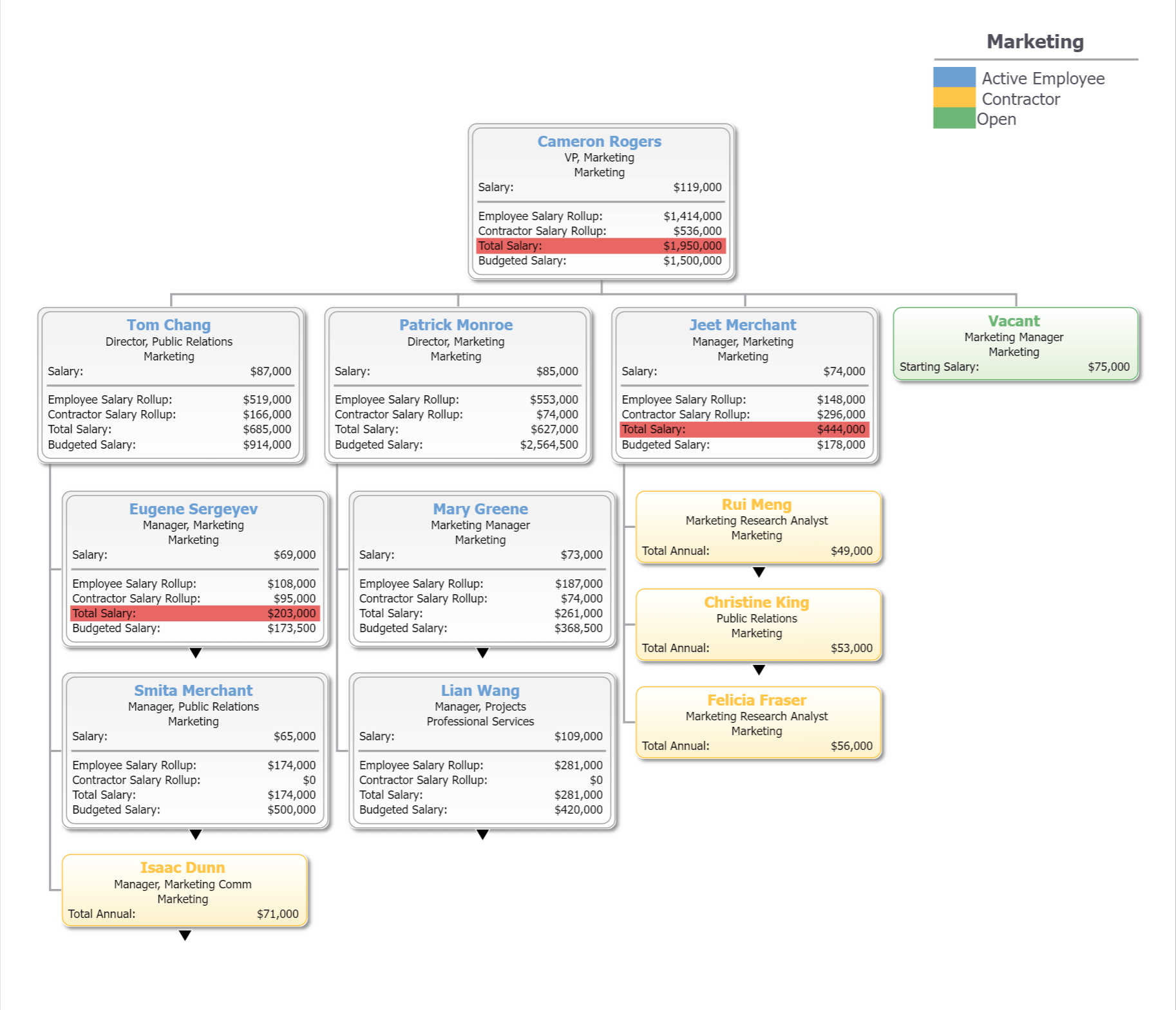December 4, 2023
12:09 PM
By OrgChart Team
In the dynamic landscape of today’s fast-paced businesses, an ability to decode and understand the intricacies of organizational structure is paramount to success. Organizations are often complex, with many departments, functions, and individuals working toward a greater goal. This guide will shed light on the significance of organization analysis in strategic organizational planning, providing insights into why it is a critical component of an HR leader’s role.
Organization analysis is the key to unlocking a company’s full potential. Company leaders gain a deeper understanding of its structure, functioning, and overall organizational health by systematically examining and evaluating the people, individual roles, departments, locations, and other facets.
Organizational analyses allow organizations to identify what is needed to achieve and maintain success, such as:
From startups to well-seasoned organizations, an organizational analysis is critical to give HR and other leaders a clear picture of how well the organization operates.
Organizations across industries are experiencing technological shifts during the ongoing digital age. As the structure of a company becomes more complex, many turn toward innovative digital solutions for organizational analysis. The integration of sophisticated technologies allows for dissecting organizational structure in a clear, data-driven, actionable manner. The future of strategic organizational evaluation lies in digital integration.

Effective organization evaluation is not a one-size-fits-all endeavor. It requires a thoughtful combination of tools and techniques. Leaders must consider the unique dynamics of their organization, industry trends, and the desired outcomes of the analysis.
A comprehensive organizational evaluation starts with a high-level review of the organization’s mission, values, goals, key performance indicators, departmental roles, and individual employees. This is often conducted via a SWOT (Strengths, Weaknesses, Opportunities, and Threats) analysis. Systematically taking an in-depth look at each component of the organization allows leaders to ensure things are running smoothly and identify gaps, barriers to success, and inefficiencies.
Utilizing a digital organization chart that seamlessly integrates with various data sources and software systems makes for a more seamless organizational performance assessment. This increased visibility allows for enhanced insight while assessing key components of the organization, such as salary by department, diversity metrics, and staff responsibilities.
Employee, customer, and stakeholder surveys are another beneficial tool for effective organization evaluation. The people working day-to-day are likely to have critical information about challenges within the company and ideas for areas of improvement. Customers/clients and stakeholders can also provide vital feedback to guide organizational initiatives and plan for the future of the company.
An organization’s most valuable asset is its people. As such, HR professionals play a key role in organizational analyses. HR leaders strategically use people analytics to understand, manage, and optimize the most crucial aspect of the organization–the employees.
HR analytics consists of extracting and analyzing key information, such as:
Organizational data is the anchor for driving actionable insights. Taking a data-driven approach to organization analysis empowers decision-makers to look beyond anecdotal support, ensuring decisions are grounded in evidence. Concise and well-maintained data will provide a wealth of information to offer leaders a comprehensive understanding of the patterns, trends, and correlations that impact their business. Sometimes, inefficiencies, bottlenecks, and areas of waste are not immediately apparent. However, analyzing the data related to these factors can provide a more accurate picture. For example, anecdotally, department heads may speak positively about particular employees. Yet, when taking a data-driven approach to analyzing individual productivity, they are found to be low-performing and at-risk employees in need of additional support and training.
Conducting a data-driven organizational analysis plays a pivotal role in guiding HR initiatives. It provides strategic insights into ensuring HR goals integrate seamlessly with the organization’s mission.
At the core of a human resource professional’s role lies a profound understanding of the organization’s structure, culture, and operational dynamics. An organization’s future success and operational health depend on the systematic evaluation of various components, including workforce composition, communication channels, leadership structures, and more.
Comprehensive organization analyses are vital for guiding organizations through the complexities of the business world. By decoding the intricacies of the organization’s structure, leaders can make informed decisions that drive success.
Unlock the potential for transformational success with OrgChart.